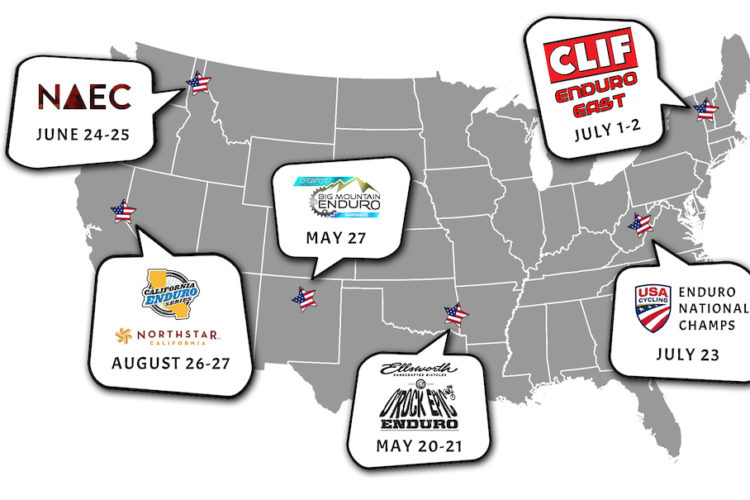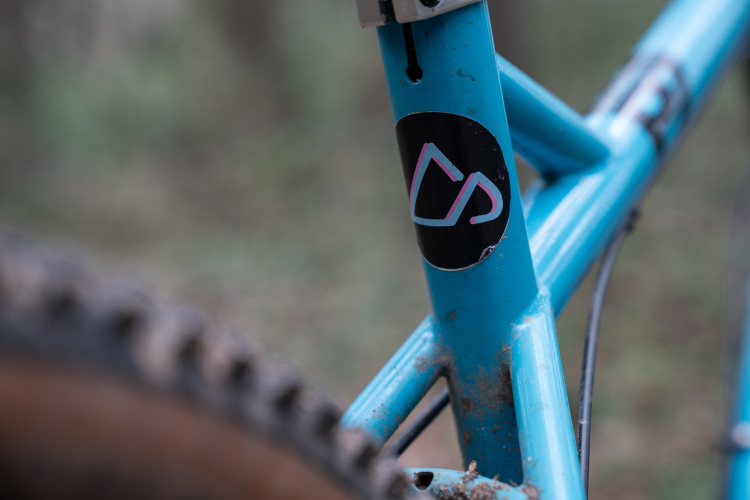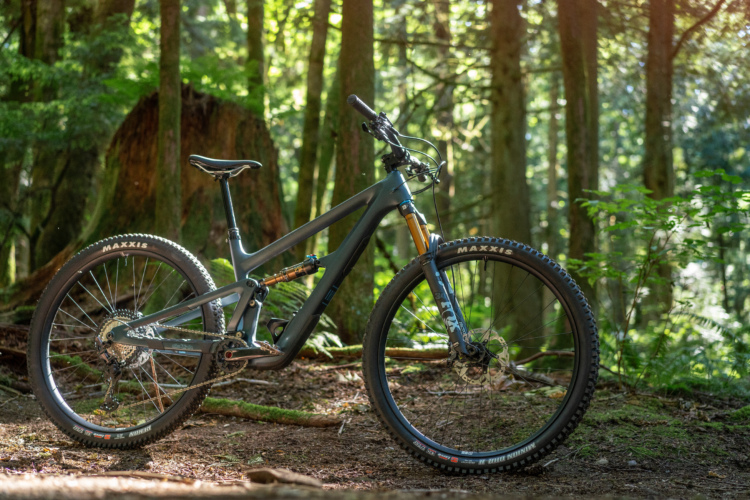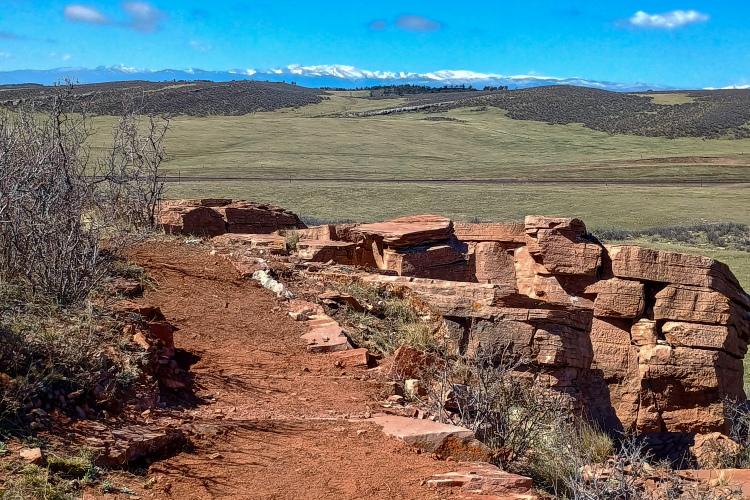Editor’s Note: “Over a Beer” is a regular column written by Greg Heil. While Greg is the Editor in Chief for Singletracks.com, any opinions expressed in this column are his alone and do not necessarily represent the opinions of Singletracks.com.
Jeff recently started a forum thread that’s generated an excellent discussion, with the question: “What is enduro?” This thread is filled with excellent arguments back and forth, and I wanted to flesh mine out a bit more.
If you read through that thread or any number of enduro-related discussions online, if you look closely enough you can spot a disconnect in the discussion, where people are talking past each other. Many people argue that the term “enduro” should only, and can only refer to certain types of things (ex. racing), while other people point out that the term “enduro” is being used by mountain bikers to describe all sorts of things, from gear to riding style, and even trails.
I’m about to go all English nerd here, so bear with me.

Descriptive VS Prescriptive
A meta-level controversy is causing this disconnect as we try to suss out what “enduro” actually means. That overarching debate is whether language and grammar are descriptive or prescriptive. Think about the dictionary that you use, and the grammar books you studied in school. What is their role? Is it to say, “here are the definitions and rules you have to use,” or to show you, “this is how this word and these punctuation marks are most often used in the world today”?
Here’s my brief take away from my college grammar classes and the BA in English that I somehow managed to acquire: looking at word definitions and grammar as a prescriptive way to smack people down and tell them they’re wrong is basically, in itself, wrong. Language, usage, grammar, punctuation–these things are in a constant state of flux. The best we can do is attempt to describe how the word is currently being used by the majority of people in the world today.
Granted, there’s still a debate raging about how much prescription should take place in grammar classes and dictionaries, so these things aren’t set in stone. But if you look at the evolution of language over the eons, it’s pretty difficult to argue that prescription is a viable way to proceed. Try reading ancient manuscripts in the original English–the further back you go, the more difficult it becomes until it’s actually impossible. The truly ancient English writings were written in what we now call “Old English,” or by another term, “Anglo-Saxon.” Old English is so far removed from Modern English that it’s considered to be a different language entirely! Yet over the centuries, the English language has slowly morphed into the words and the constructions that we use to communicate verbally and in writing today.
“Enduro”

The problem with the term “enduro” is that it’s a word in a state of flux. While at one point the term may have been used solely to refer to a race format, in 2017 the mountain bike industry and the mountain biking subculture at large are using it to refer to a race format, a type of gear, a riding style, and even perhaps a type of trail.
While “enduro” may have meant one thing 10 years ago, it means something totally different today.
Personally, I don’t have a judgement to pass on how I think the term should be used. Instead, as the usage in the MTB culture at large changes, I’m personally changing my own usage to reflect the common tongue, if you will. This approach is predicated upon my general stance in the prescriptive vs. descriptive controversy–I fall pretty hard on the descriptive side.
In my opinion, in MTB culture at large “enduro” is taking on the same meanings across the board that we used to use the term “all-mountain” for. And I’m totally OK with phasing out the term “all-mountain” — it was awkward at best, and a pain in to write and speak at worst. “Enduro” flows off the tongue much more freely, and I’m all for verbal economy.
OK, Maybe I’ll Get a Little Prescriptive…

If there’s one thing that annoys me to no end, it’s seeing the world “enduro” capitalized. If you’re sticking to capitalization rules that follow common usage, the only reason “enduro” should contain a capital “E” is if it’s being used as a proper noun (or in an article title, or some other place where capitalization is required). If you’re referring to the Specialized Enduro or the Enduro World Series, then fine–capitalize away. But if you’re referring to an enduro race, an enduro bike, an enduro helmet, or the fact that you participated in an enduro, all of those general usages should be lowercased.
You could turn around and argue that you’re kicking common usage to the curb and have decided to make your own rules, in an attempt to impact the future of the English language, and your argument would be totally valid… as long as you’re not submitting an article to a publication or are producing marketing copy for a company or event. As descriptive as I may prefer to be when it comes to language and grammar, knowing and adhering to the rules of common usage does have value, because those rules allow us to communicate with one another clearly and without confusion.
So please, feel free to grab your enduro bike and head out for an enduro ride. Just make sure you don’t capitalize it.












14 Comments
Jan 18, 2017
Now I know I'm not the only cuss to use the word suss.
Jan 18, 2017
For another example of this, look at the increased use of the "c" word in the US in the last few years. That used to be a British term that you never heard on this side of the pond, but that's changing pretty quickly.
Jan 18, 2017
So what is
Enduro
Trail
Cross Country
All-Mountain
DH
etc etc
I think a lot of beginners must be lost trying to figure out what people are talking about.
Jan 18, 2017
- Cross Country (XC): riding fast on a light bike in spandex while wearing a heart rate monitor. Trails are generally smoother and emphasize fitness over bike handling. At least until you get to the World Cup level. Bikes in the 100-120mm travel range. Lots of hardtails. Mostly 29ers.
- Trail: riding your bike on singletrack in the woods. This could be a local loop behind your house or an all-day adventure in the mountains. Bikes in the 120-150mm travel range. Mainly full-suspension, although there are plenty of trail-worthy hardtails. Wheel sizes of 27.5, 27.5+, and 29.
- All-mountain: Big rides deep into the backcountry where you're not entirely sure of the terrain you will encounter. Because of this, you need a bike that can save your skin during "Oh shit!" moments. Bikes in the 150-180mm travel range. Essentially just full-suspensions. Mainly 27.5, although there are a some 29ers in this category.
- Downhill (DH): Riding on purpose-built trails. What purpose? Going down the hill as fast as possible. The terrain can be flowy and jump-filled, a la bike parks. Or natural, steep, and extremely technical. DH trails are ridden one way - down. Even if you wanted to, they would be extremely difficult to climb up. DH bikes are like the trails, they are built for going down with no provisions to do anything else. Travel in the 200+mm range. All 27.5s although there are still used 26ers floating around.
- Enduro: See all-mountain. Essentially the same as all-mountain, but you have to make sure you're sponsor correct (no mismatched brands). So for instance, if you're wearing Fox gloves, then you must also wear a Fox jersey and shorts. However, it is acceptable to wear a different brand helmet, as long as the color compliments said Fox kit. You must also use the word "enduro" way too often. This explainer may also be of interest to you: https://www.singletracks.com/blog/uncategorized/how-to-become-a-bro-brah-mountain-biker-in-25-easy-steps/
Jan 18, 2017
https://www.singletracks.com/blog/mtb-gear/mountain-bike-disciplines/
Note: all-mountain = enduro (the term enduro wasn't in use back in 2009.) Would be interesting to update this article with a better illustration and more of a discussion on suspension travel and geometry.
Jan 25, 2017
Jan 18, 2017
Also, what's a fat bike? I live in GA. ;)
Jan 18, 2017
Jan 18, 2017
Jan 18, 2017
I know enduro to be a racing style. The gear enduro riders wear is enduro gear, but other genres can ride enduro gear too much like trail riders can wear XC stuff and XC riders can wear trail gear, etc. I agree with your assessment of fazing out all-mountain and using enduro. At lift serviced bike parks, the enduro trails are basically anything you don't need a DH bike for and isn't a dedicated jump line (flow trails, freeride trails minus the really sketchy jumps, regular XC style trails, etc) as long as it points down. The uphill part of enduro doesn't matter...as long as you get back up the hill.
We're hard pressed to find enduro in Wisconsin, most of our riding is "trail".
Jan 18, 2017
Jan 18, 2017
Jan 18, 2017
Jan 18, 2017